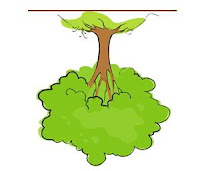Big Data is a tech buzz word, each of us may have our own understanding of what Big Data is or what it contains. It contains data, we know; perhaps very large quantities of data in formats that are new to us and stored differently from what we have seen ?
I was in a faculty meeting discussing BI/analytics courses where I first felt extent of the diversity of meanings that the phrase "Big Data" conveys, therefore decided to write about it.
 |
| source: http://www.bigdatabytes.com/managing-big-data-starts-here/ |
How is it different? I believe understanding HBase is the key. HBase is a non-relational, distributed data storage system for the Big Data in Hadoop. InfoSys educators need to develop course modules (for 1 or 2 class meetings) to illustrate how Big Data is structured, or better say, unstructured in HBase, contrast its features with those w/ RDBMS and discuss NoSQL.
Parallel processing, synchronization, and other technical matters, belong to master's program in more technical programs, I would think. But they can be briefly discussed in our DB/BI classes too.
I am working on my course module because I think it is necessary for our students to enter the world of Big Data informed and prepared. Will share it here as soon as it's ready, stay tuned!





